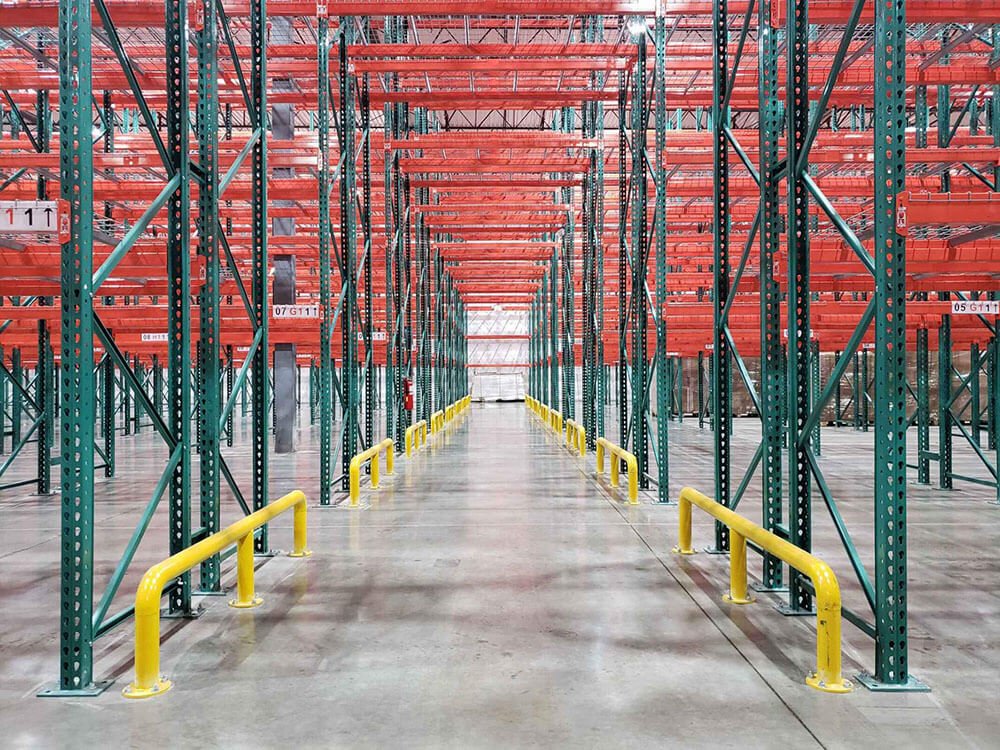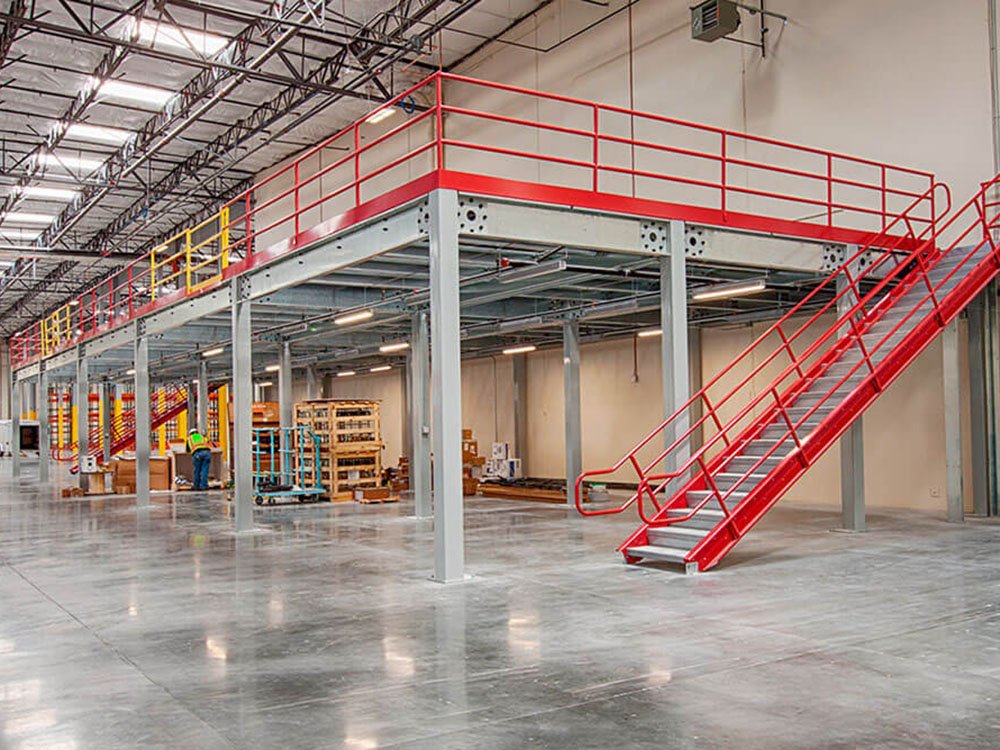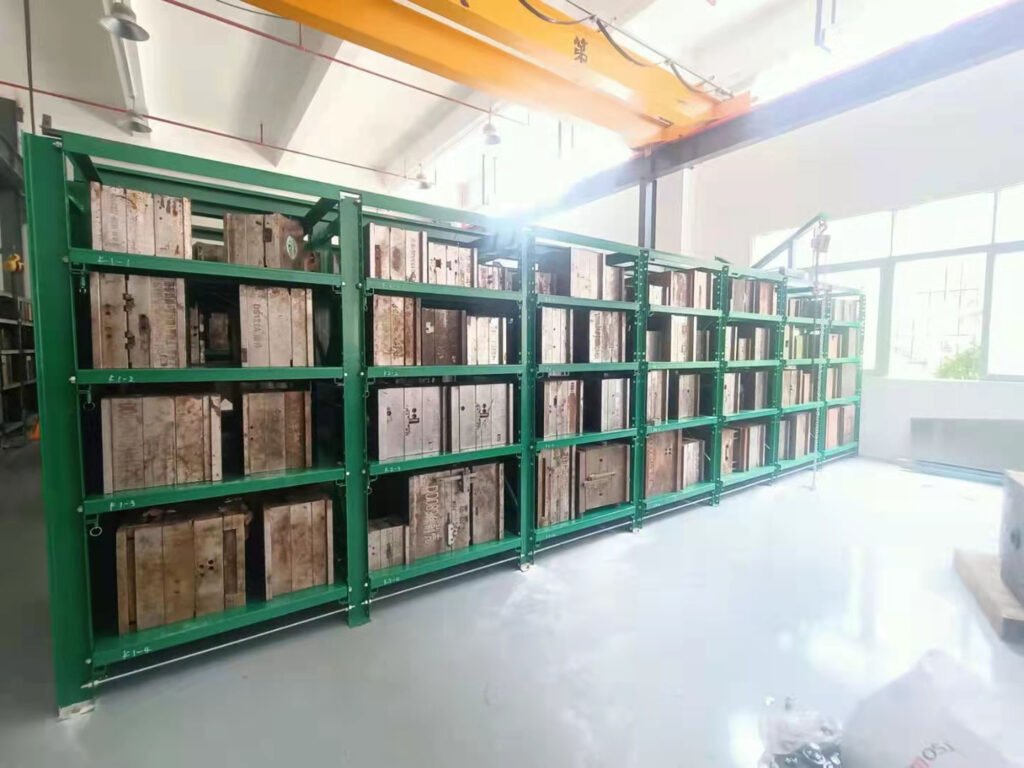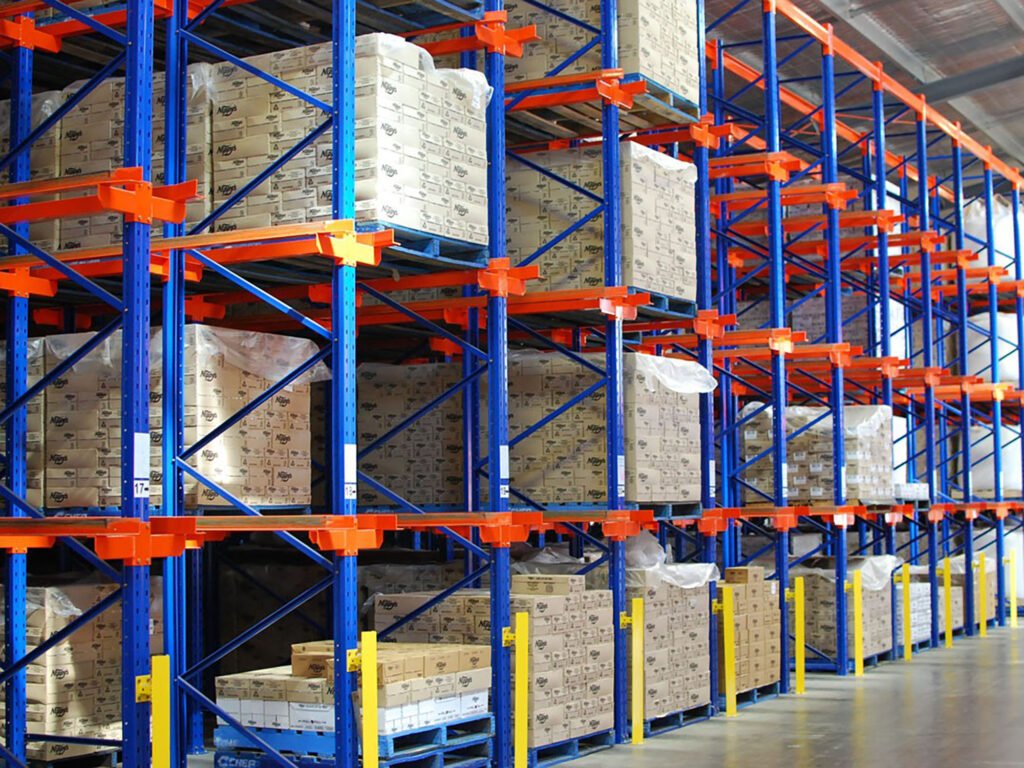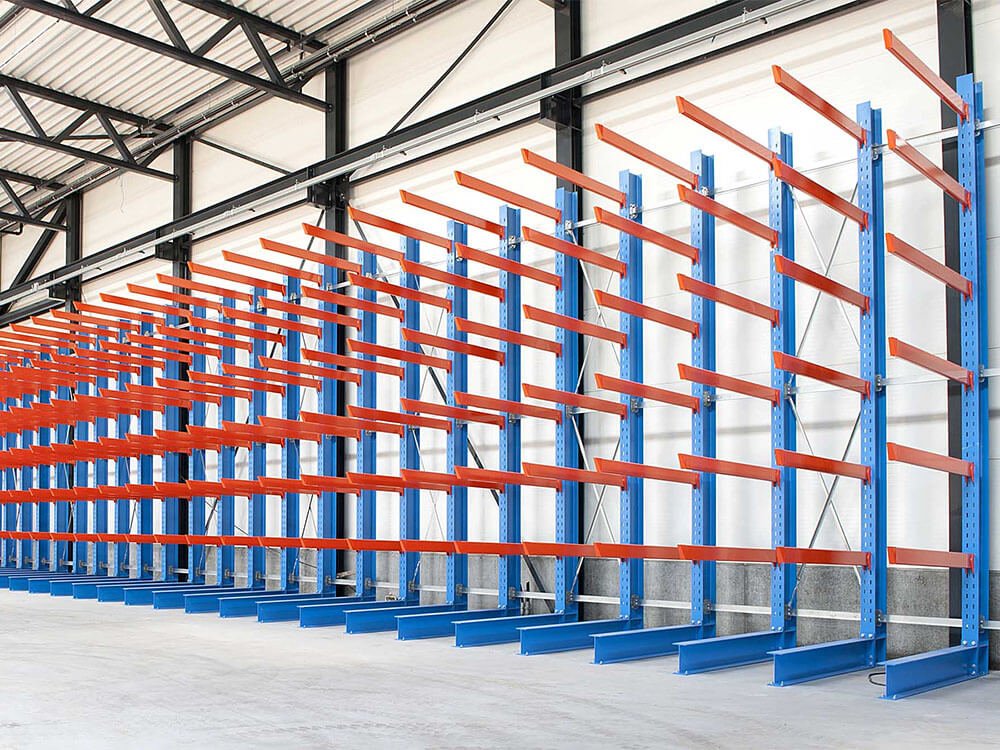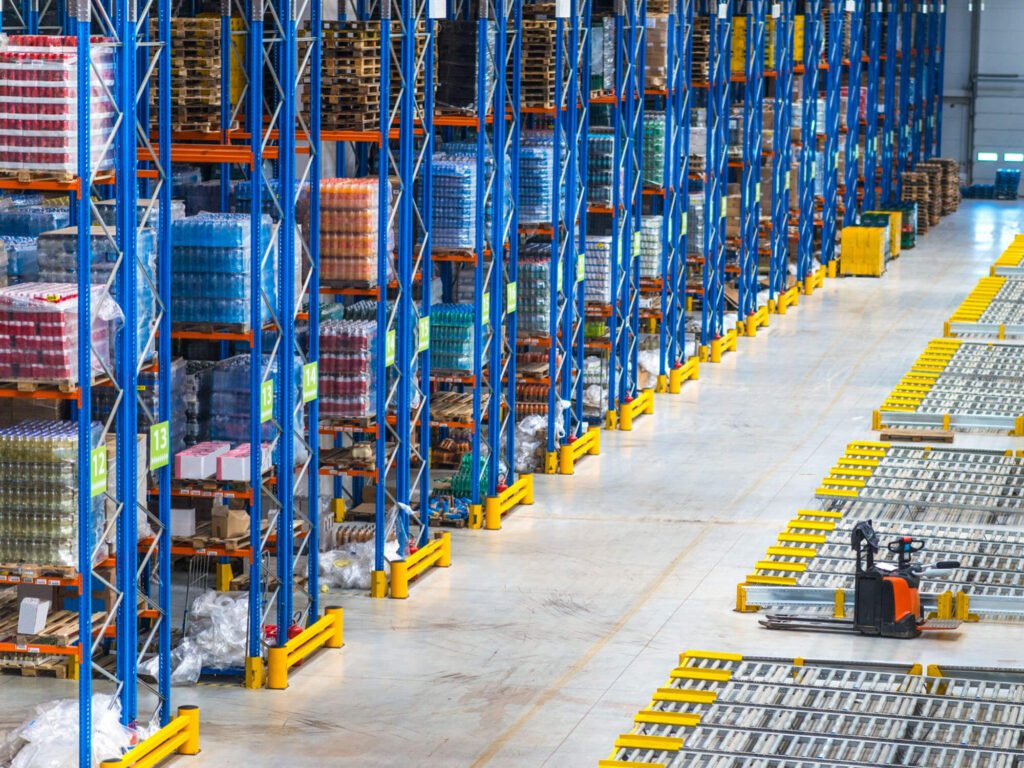China Radio Shuttle Pallet Racking System Manufacturer

What Is Radio Shuttle Racking
Radio shuttle racking, also known as shuttle pallet racking or simply shuttle racking, is an advanced form of warehouse storage pallet racking system that utilizes remote-controlled shuttle vehicles to transport pallets within the rack structure. These shuttle vehicles can move horizontally along the rack rows, inserting or extracting pallets from the system. This technology significantly improves warehouse efficiency by automating pallet handling operations, reducing labor requirements, and maximizing storage capacity. Radio shuttle racking is particularly beneficial for high-density storage applications and environments with a high volume of pallet movements.
Features of Shuttle Racking
Shuttle racking systems offer several distinctive features that optimize warehouse storage and handling:
1. Automated Shuttle System: Shuttle racking utilizes motorized shuttle carts that operate within the racking structure to transport pallets horizontally, increasing efficiency by reducing the need for manual pallet movement.
2. High-Density Storage: The shuttle system enables deep lane storage, allowing multiple pallets to be stored within each lane, maximizing warehouse space utilization and increasing storage capacity.
3. Selective Pallet Access: Despite the high-density storage, shuttle racking provides selective access to each pallet, enabling efficient retrieval and storage of specific pallets without disturbing others in the same lane.
4. Integration with Warehouse Management Systems (WMS): Shuttle racking can be seamlessly integrated with WMS and other warehouse automation technologies, allowing for real-time inventory tracking, order processing, and optimization of warehouse operations.
5. Enhanced Safety Features: Shuttle racking systems are equipped with safety features such as collision avoidance sensors, emergency stop buttons, and obstacle detection mechanisms to prevent accidents and ensure a safe working environment.
Overall, the features of shuttle racking contribute to efficient, space-saving, and streamlined warehouse operations, making them an ideal solution for high-volume storage and retrieval requirements.
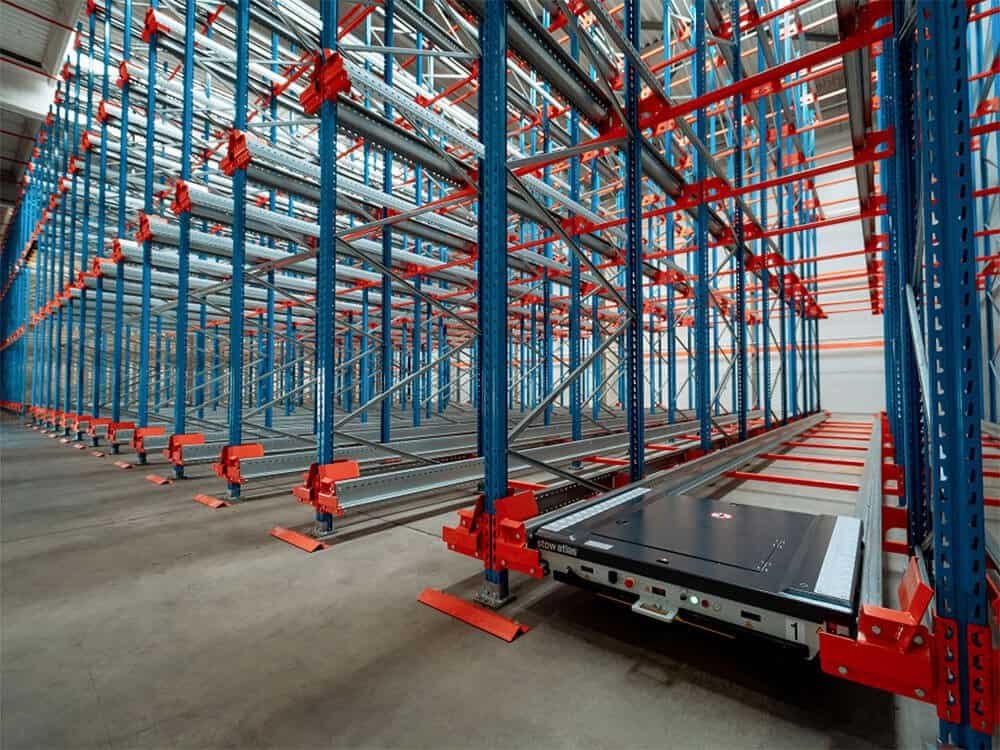
Radio Shuttle Racking System Design

Radio Shuttle Racking System Layout Design
Please send us detailed data such as warehouse size, cargo size, etc. Our engineers will design a reasonable layout plan for you.

Three-dimensional drawing of Radio Shuttle Racking
The exact dimensions of the racks, the load and the number of tiers will be presented to you in a three-dimensional drawing.
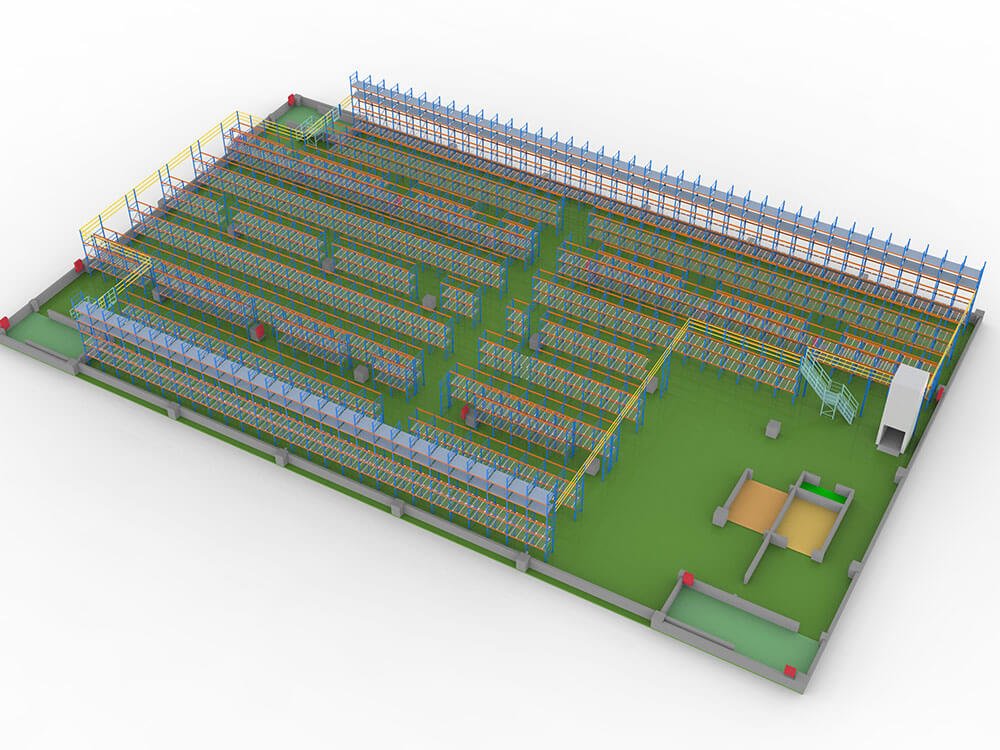
Rendering of Radio Shuttle Racking System
If the project is complex, we can also produce installation drawings for you, and we can even produce renderings if necessary.
Why Choose Lracking Custom Radio Shuttle Pallet Racking
1. Customization Expertise: With over 16 years of industry experience, Lracking excels in designing customized radio shuttle pallet racking solutions for specific warehouse requirements, ensuring optimal space utilization and efficiency.
2. Quality Assurance: Lracking products are manufactured using high quality cold rolled steel and advanced technology, and we are professionally certified to ISO9001, CE, AS4084, TUV and more. This ensures the durability and reliability of radio shuttle pallet racking systems.
3. Comprehensive support: From initial consultation and design to installation and after-sales service, Lracking can provide comprehensive support throughout the project life cycle. Their team of experts provides professional guidance and assistance to ensure seamless implementation and operation of the radio shuttle pallet racking system.
4. Cost-effective solutions: Despite offering customized solutions, Lracking strives to provide cost-effective radio shuttle racking systems without compromising on quality and performance. As a shuttle rack manufacturer in China, we offer competitive pricing and efficient design solutions to help maximize value for warehouse operators.
Application of Shuttle Pallet Racking System
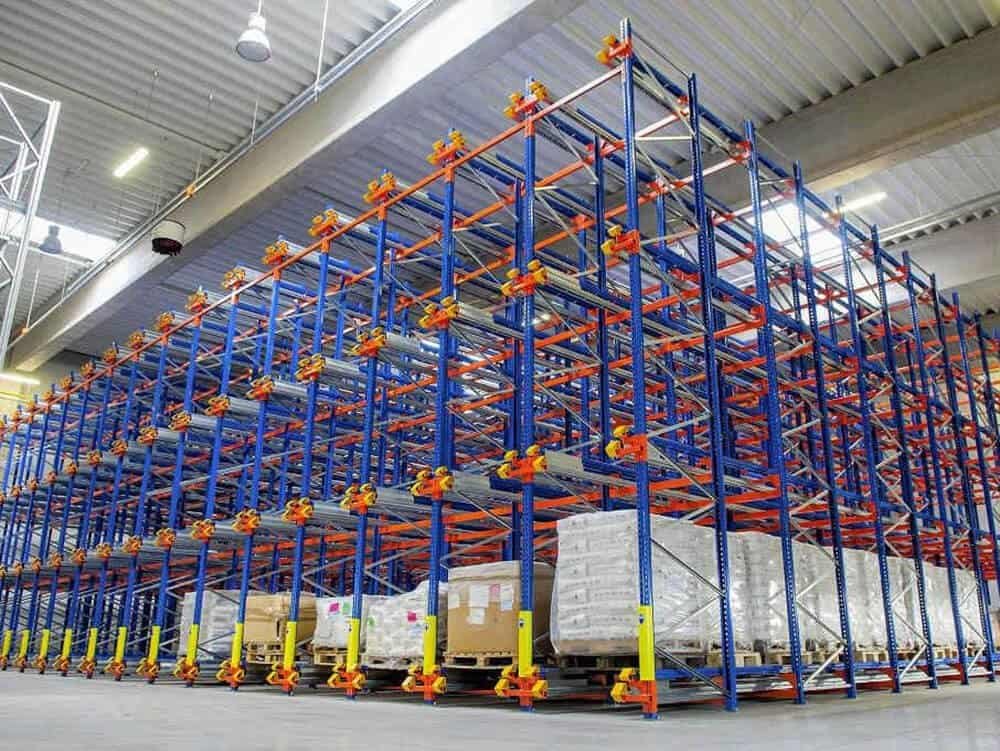
automated shuttle pallet racking system
One of the key features of shuttle racking as an automated racking system is the ability to operate in both First In First Out (FIFO) and Last In First Out (LIFO) modes, allowing flexibility to accommodate a wide range of inventory management needs. In addition, shuttle rack systems can be integrated with warehouse management software (WMS) to optimize inventory tracking, retrieval and storage processes.
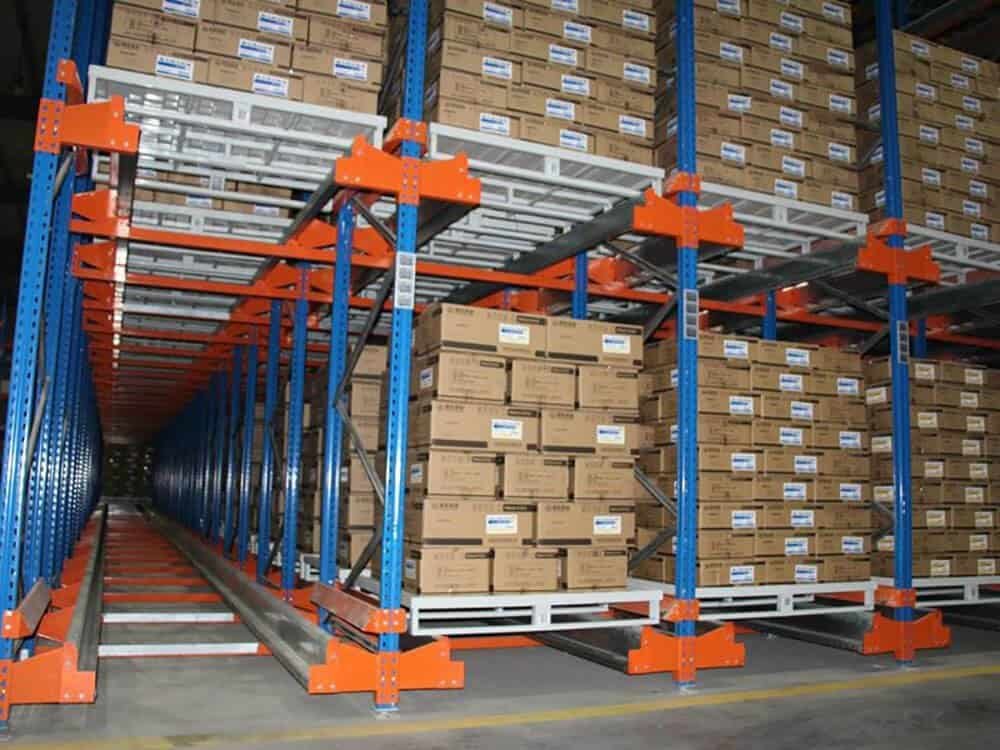
High Density Shuttle Racking
As high-density racking, shuttle racking can significantly increase warehouse storage capacity by optimizing the utilization of vertical and horizontal space, making it an ideal choice for facilities with limited floor space. Shuttle racking maximizes storage capacity while improving inventory management efficiency.

FIFO Racking
FIFO shuttle racking is commonly used in industries with perishable goods, such as food and beverage, pharmaceutical and automotive manufacturing, where maintaining the freshness or quality of products is critical. FIFO shuttle racking systems promote efficient inventory turnover while maintaining product integrity, helping to improve inventory management and reduce waste.
Frequently Asked Questions About Radio Shuttle Racking
How does shuttle racking work?
Shuttle racking works by using autonomous shuttle robots to move pallets within the rack structure. The system consists of guide rails installed on each storage level, along with specialized shuttle robots that travel horizontally along these rails. To operate the system, a forklift places the shuttle robot and a pallet at the desired storage lane entry point. The shuttle robot then transports the pallet along the guide rails to the designated storage location within the rack. During retrieval, the shuttle robot locates the requested pallet, retrieves it, and transports it to the designated exit point for pickup by a forklift.
How long does it take to customize a shuttle racking system?
The time required to customize a shuttle racking system can vary depending on a variety of factors, including the complexity of the system, the size of the racking system, and more. Generally speaking, a shuttle racking system can take one to three months from the initial design phase to final installation and commissioning. It is essential to work closely with your shuttle racking supplier to determine a realistic timeframe based on your specific needs and project scope.
How much does shuttle racking cost?
The cost of shuttle racking can vary greatly depending on factors such as the size of the installation, the complexity of the system, customization requirements and the supplier. In general, shuttle racking systems tend to have higher upfront costs compared to traditional racking systems such as drive-in racking because of the additional technology and equipment involved, such as pallet shuttles and associated control systems. In general, prices range from $150 to $350 per pallet position in a shuttle racking system, so it is important to request a detailed quote from the shuttle racking supplier based on specific project requirements.
Is shuttle racking easy to install?
Shuttle racking systems typically require specialized installation due to their complexity and the need for precise configuration and calibration of the pallet shuttles and associated infrastructure. While the installation process will vary depending on the specific system and vendor, it generally involves several steps, such as preparing the shelving structure, installing the shuttle tracks and rails, setting up the shuttle robots and control systems, and performing testing and commissioning. While the installation of shuttle racking may not be as simple as selective racking systems, experienced suppliers and installers can handle the process efficiently to ensure proper functionality and performance.
What are the advantages of shuttle racking over drive-in racking?
Increased Efficiency: Shuttle racking utilizes pallet shuttles that work on multiple levels simultaneously, allowing for faster pallet handling and retrieval than drive-in racking where forklifts need to enter and exit each aisle. Increased Selectivity: Each pallet shuttle can independently access any pallet within the racking structure. This flexibility allows for easier access to specific SKUs than drive-in racking where pallets are stored in a last-in, first-out (LIFO) fashion. Reduced Labor Costs: Shuttle racking reduces the reliance on forklift operators to move pallets within the racking structure, which reduces labor costs and improves safety by minimizing the need for manual handling in dense storage environments.
What are the disadvantages of shuttle racking?
Initial cost: The upfront cost of a shuttle racking system is typically higher than that of a conventional racking system due to the need for specialized pallet shuttles, infrastructure, and control systems. Installation complexity: Installation of a shuttle racking system can be more complex and time-consuming than that of a conventional racking system, and requires specialized knowledge and careful calibration. Dependence on automation: Shuttle racking relies heavily on automation, which means that any malfunction or breakdown of the shuttle robot or control system can interrupt operations and require specialized technical support for repairs. Maintenance requirements: Shuttle racking systems require regular maintenance to ensure optimal performance, including repairing pallet shuttles, inspecting tracks and crawlers, and testing control systems, which can increase operating costs.

